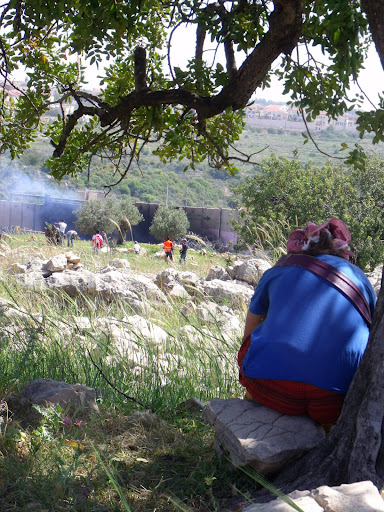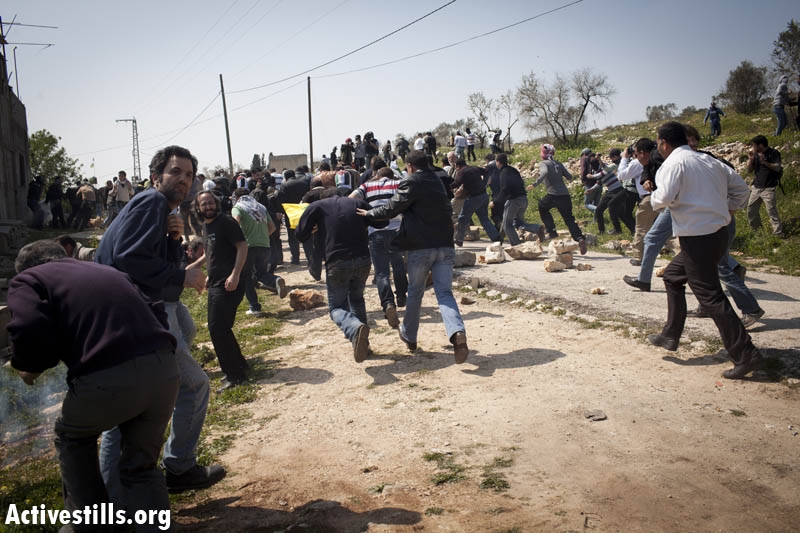Tag: Tear-Gas Canister
-
Spring time in Ni’lin: Photos of the demonstration
by Maxine Kaufman-Lacusta 6 April 2012 | Refusing to be Enemies: The Book I’m a bit slow at writing things up, so in the meanwhile, here are some photos of this past Friday’s action in Ni’lin. To me the the most vivid pictures were the shebab, including boys who looked as young as 12 , symbolically…
-
Video: Israeli military shooting directly at press in Kufr Qaddoum
by Axel 4 April 2012 | International Solidarity Movement, West Bank On Friday the 30th of March the weekly demonstration was held in the village Kufr Qaddoum outside of Nablus. This day was however the same day as the Global March to Jerusalem, meaning less media attention than normal, and also less internationals present as…
-
Awaiting release and hearings of local activists, Kufr Qaddoum met with more Israeli violence
by Robin and Leila 23 March 2012 | International Solidarity Movement, West Bank It was under a bright, sunny sky that the people of Kufr Qaddoum once again gathered to protest against the roadblock which isolates them from the rest of the West Bank. The past week there had been much frustration and anger since Murad Ashtawi, member…


